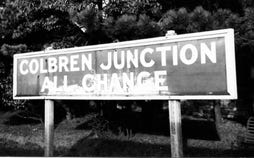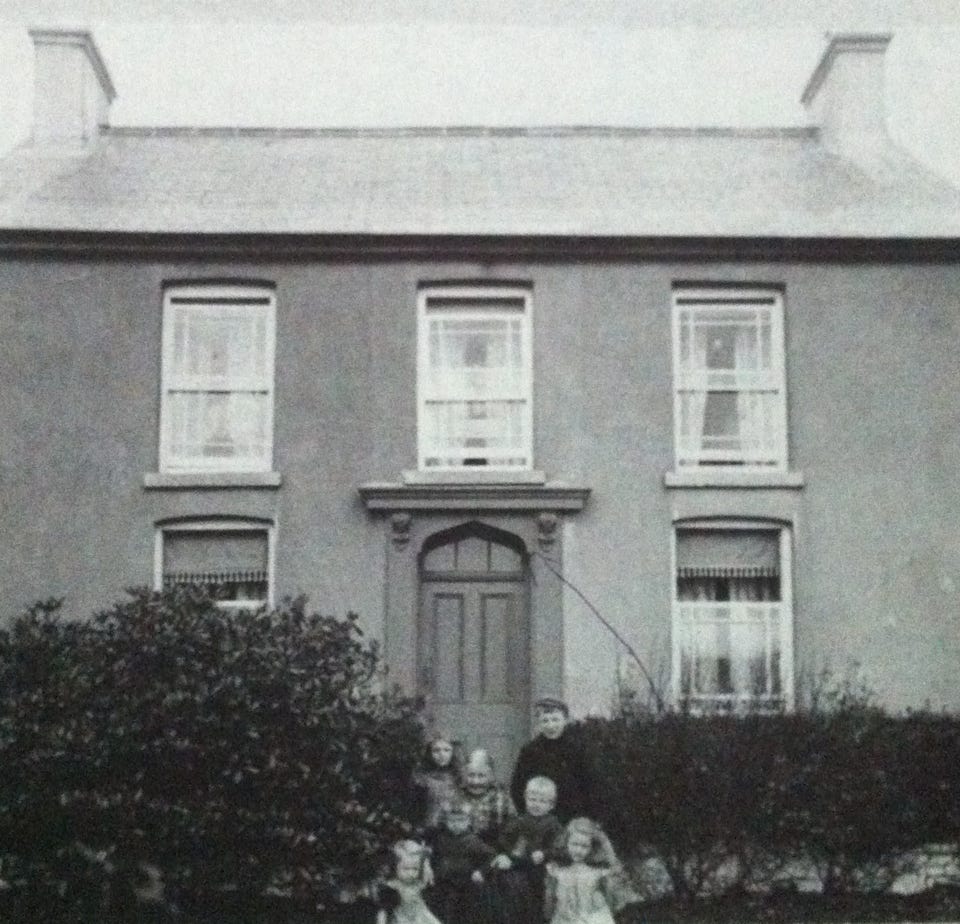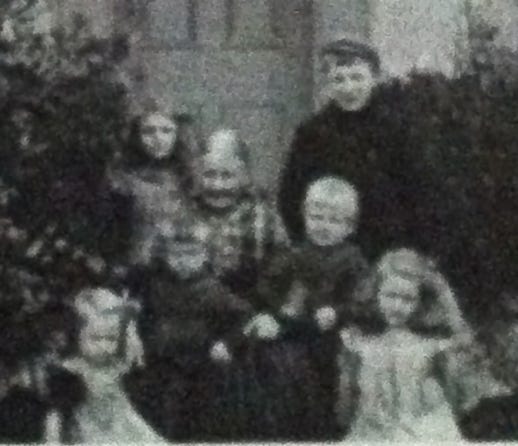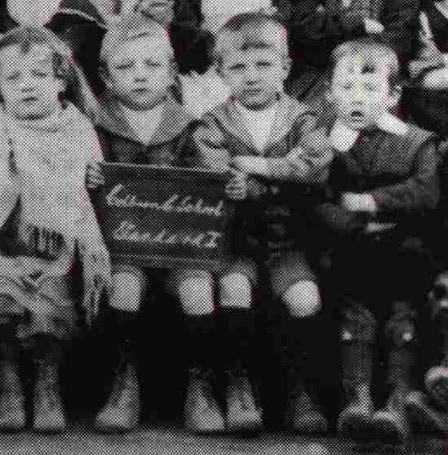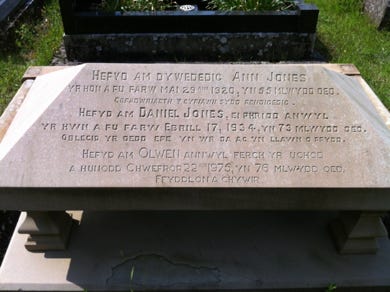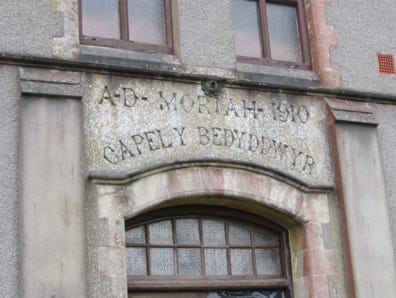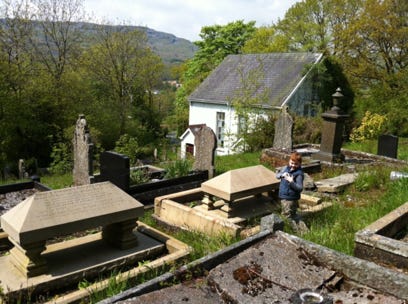Daniel Jones (1862-1934) was the second youngest of William Jones’ children, only 5 when his mother died in 1862, and 17 when his father passed away in 1879. This may have helped him. Although 17, and had probably been working since he was 13 or 14, he was still an orphan and had moved to live with one of his sisters (Mary Powell) at Camnant by 1886. The early loss of his parents may have sharpened his ambition: while at Camnant he made a critically good choice in looking not far across the fields and choosing for his bride in 1886 one Anne Morgan - a daughter of the perhaps rather grandly titled “Coelbren House”.
Coelbren House was not the manor house its name suggests – there was no manor - but was the first privately built house in the nascent village of Coelbren, built close to the railway junction and the Price’s Arms. Indeed the closest this area came to having any sort of manorial family at this time would have been the Prices at Glynllech, naming the pub and the terrace known as Price’s Row, later also known as Dickson’s Row. Coelbren House therefore claimed the title and the conceit continues still, although it now has to have a more prosaic street number as well. In any case, in the late 1870s it was quite a step up from Front or Back Row, Onllwyn. The station and the Price’s Arms date from the late 1860s. At the time of the house’s construction in 1876, Coelbren had these important elements – and the (established) Coelbren church - but was otherwise still very little more than an assortment of larger and smaller farms, clinging precariously to the stony soil at the top of the Dulais valley. The station, though, and the Price’s Arms were now providing important focal points around, and due largely to which the village would grow rapidly.
Here, we should pause, go back a little in time and consider how the Morgan and Jones families came together at Coelbren House. This house was built in 1876, by a mixture of cash and barter, by a small, fiery, intelligent and ambitious country tailor from the Carmarthenshire borders called Richard Morgan. He came to Coelbren via Penycae and his background was very different to the Joneses of Banwen. To link these families, we must now move to the rural Breconshire area of Llywel and the various Morgan families who lived there.
Coelbren House, probably around 1910. The twin boys John Walter and Jestyn Jones are shown with their grandmother, Gwenllian Morgan (Walters), and siblings: L-R Maggie Jones, Gwennie Jones, Jestyn Jones, Gwenllian Walters (grandmother), John Walter Jones, Will Jones, Olwen Jones. Source: family photograph
As young Daniel Jones was effectively orphaned and homeless, lodging with his sister, it made sense that the new couple came immediately to live at Colbren House after their marriage in 1886. This would remain the family home for them, some of their children, and today still even their grandchildren.
His father-in-law Richard Morgan already knew the Jones family as he had already made suits for father William and some of his sons. He visited Corslwyn Coch in April 1877 and made suits for Meredith, then aged 23 (£3/15) and John, then aged 11 (£1/1). Daniel, aged 14 in November 1876 had one made, for £1/12 from his future father in law.
Both men at Coelbren House– Daniel Jones and Richard Morgan – took a keen interest in both local civic and religious affairs. Leading a firm alliance of other related families, both men for example, were behind the initial establishment of the first primary school in Coelbren in the mid-1890s. Much of the reasoning was pragmatic – other schools were too far away for poorly shod Coelbren children to trudge the muddy lanes – but we can also sense a real desire for social improvement, a wish for something better for their children, coming from these men, who by no coincidence were also stalwarts of the local Baptist Chapel, many ending up in the burial yard at the old Nant-y-Ffin chapel on the country lane towards Pen y Cae. This was a potent combination. Faith, self-discipline and self-improvement were the common, unshakeable and inter-twined tenets of their belief. Add to this, maybe, some tenacity – maybe stubbornness.
Above: the advert is from the South Wales Daily News, August 30 1894. According to Davies (1994) there was not an immediate rush for the job; it had to be re-advertised several times and the eventual appointee’s salary was increased to £60 pa.
All Daniel Jones’ children would benefit from the new primary school at Coelbren, started in 1894, including his twin boys John (Jack) and Jestyn, here pictured in Standard 1 around 1910. Scanned from Davies (1994).
Contrast this position with the report of the school board of 1991 - “Annual general meeting…Governors’ report to parents…Very poorly attended..Even the new secretary not there!” (26/09/91 B Thomas, Headmaster, quoted by Davies (1994)).
“In the light of such apathy, I couldn’t help think back to 1892-94 when Coelbren folk of the 19th century schemed and plotted to satisfy the authorities that their request for a Board School was justified. Remember how they measured the Penycae lane and canvassed the district; counting every child of a school age, babes in arms, babes-en-route, and even any father with a twinkle in his eye! Those meetings a century ago were well attended, you can be sure…” (WT Davies, Coelbren School, 1994)
Like his father William, Daniel Jones too became an eventual victim of his lifetime’s work in the colliery: he died in 1934 at the age of 73, but had been ill and confined to bed at home for the past four years. He had been kicked by a horse in the colliery and died from stomach cancer.
Above: an early twentieth century view of Station Road, Coelbren. Coelbren House, will be the last house on the left. The railway station is out of site at the extreme bottom right. Note the un-made road and rudimentary garden walls. Photo courtesy of WT Davies.
